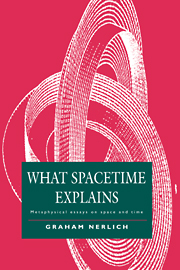Part Two - Variable curvature and General Relativity
Published online by Cambridge University Press: 19 October 2009
Summary
The essays of this part form a somewhat less unified group than those in Part 1. In some ways the ideas are more sophisticated because the geometries they deal with are no longer Euclidean or pseudo-Euclidean. Yet the first two papers are among the most generally accessible of those I have written on space and spacetime. Only the easiest of departures from Euclidicity are considered, they concern only space and they are developed in quite intuitive ways.
A powerful force which does much to shape the literature on space is the abhorrence felt toward it because it is unobservable. We are much inclined to think that this characterises its essence, its ontic type. That is, if there is such a thing as space (or spacetime), then it is of a kind deeply different from the kind of thing generally admitted as real in physics. The deep difference is precisely that it is imperceptible in some principled way that springs from its ontic type. A main theme in §§6 and 7 is that this is a deep error. It is because of its geometric type that our concrete, actual space eludes perception. It's because it is, locally at least, very nearly Euclidean.
It was confusion over this which led Leibniz to argue that we can neatly detach the spatial relations which things have to one another from the relations which they have to space. Robbed of its perceptible, material framework, space stands naked before us, its ontic type shockingly revealed: it is a bogus entity, not a real thing at all.
- Type
- Chapter
- Information
- What Spacetime ExplainsMetaphysical Essays on Space and Time, pp. 141 - 144Publisher: Cambridge University PressPrint publication year: 1994



